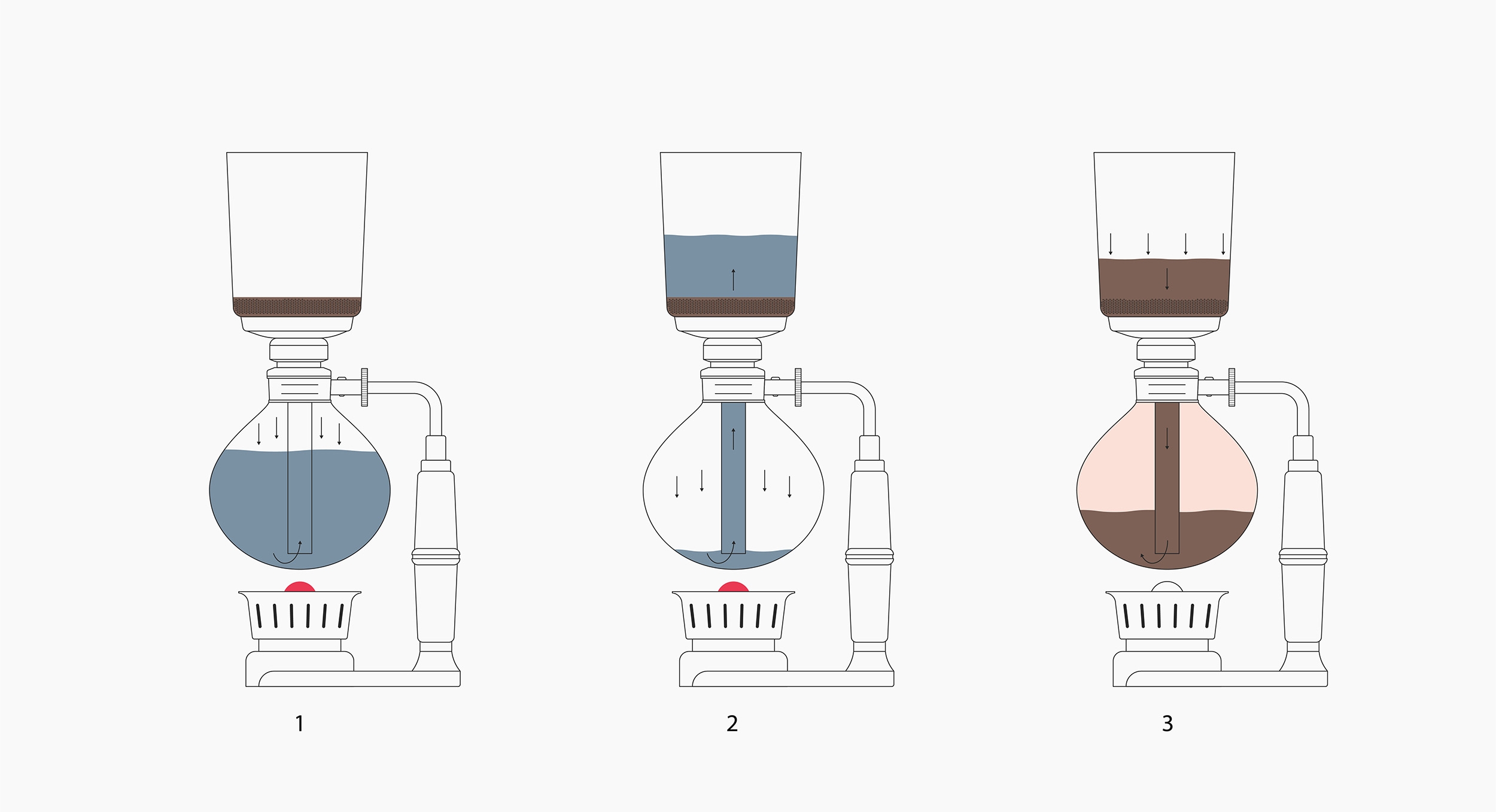As Nörremberg noted when he published his design, the syphon neatly demonstrates some principles of basic physics.
The bottom chamber in a syphon is sealed at the top with a gasket so that air and steam cannot escape. The only connection between the bottom chamber and the top is via a long tube immersed in the brew water.
When the bottom chamber is heated, the water begins to evaporate and form steam. As steam builds up and expands, the pressure in the bottom chamber rises. Since the steam has nowhere to escape to, it pushes down on the water in the chamber, forcing it up through the tube into the brewing chamber at the top. A filter at the base of the brewing chamber prevents coffee grounds from passing into the bottom chamber.
 Syphon brewing. The water is heated (1), generating steam pressure which pushes the brewing water up into the top chamber (2) where coffee and water mix. When the heat source is removed, the steam condenses, leaving a partial vacuum (3). Gravity and atmospheric pressure work together to push the brewed coffee back into the lower chamber and fill the vacuum.
Syphon brewing. The water is heated (1), generating steam pressure which pushes the brewing water up into the top chamber (2) where coffee and water mix. When the heat source is removed, the steam condenses, leaving a partial vacuum (3). Gravity and atmospheric pressure work together to push the brewed coffee back into the lower chamber and fill the vacuum.
The water and coffee are mixed in the upper chamber and brewing begins. During this stage, the temperature of the water in the upper chamber measures below 100°C (212°F), as it hasn’t fully boiled — it only needs to produce enough steam to overcome the force of gravity and the 1 bar of atmospheric pressure pushing down on the brewing water.
The steam and any residual water in the lower chamber, however, is still being heated. Some of this heat is transferred to the brewing water, keeping the temperature high or even increasing it over the course of the brew.
Once the brew is ready, the heat source is taken away. The steam cools and condenses, reducing the gas pressure inside the bottom chamber. Once the gas pressure inside the bottom chamber is low enough,